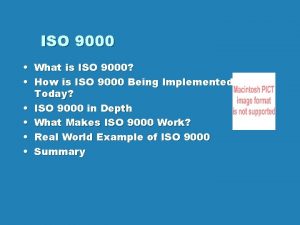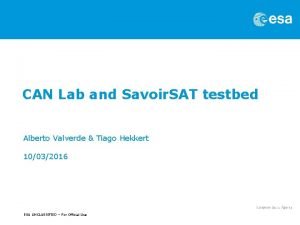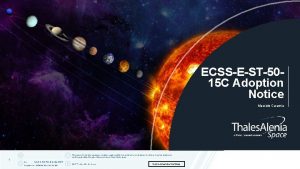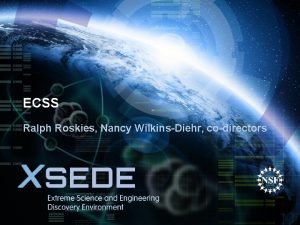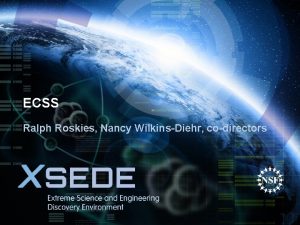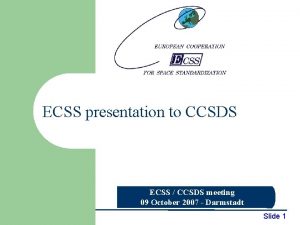Japanese Comments on ECSS SDWG comments to ISO




- Slides: 4

Japanese Comments on “ECSS SDWG comments to ISO 24113 v 6. 0, 6. 1. 1. 2” 25. 02. 2009 Japanese delegation contact to: Kato. akira@jaxa. jp

Opinion of Japan: Japan propose to delete 6. 1. 1. 2, completely. Reasons are; (1) Reason-1 Some kinds of lower structures will be released for multiple payloads launching in the world, but the number of element of such structure is not limited to one. In the case of H-2 A, such structure is consisted of three elements. Perhaps other vehicles will have such structure made of multiple elements. These elements have been allowed as customary because of their short orbital lifetime. There is no need to mention. [Remark] In the “Support document Support to the IADC Space Debris Mitigation Guidelines” said in its tailoring guide that “support structural elements left in orbit during a multiple payload mission may be released, if there are no feasible alternative measures at present. Fortunately, when released at low altitude their orbital lifetimes can be relatively short if their area-to-mass ratios are high. ”

(1) Reason-2 It is not normal to permit violation to this STD without any rational. If any execution would be essential, we might add “it will be allowed if the orbital lifetime is less than 25 years, ” although we would not suggest it. We hope not to stimulate this matter. Such action should be done on the responsibility of each organization.

(3) Reason-3 The proposal from ECSS “For the launch of a single spacecraft there shall be at most one additional launch vehicle element injected into orbit” may be come from European Standard to allow to leave orbital stage in orbit. But this ISO STD treats the orbital stage separately from operational debris, such modification would only cause confusion. European Co. C says followings, (clearly, one object means orbital stage. ) Ref. European Code of Conducts: SD-DE-01 a) For the launch of a single payload, there should be only one element (for example, stage) of the launch vehicle injected into orbit, excluding the payload. b) For the launch of multiple payloads, there should be at most two elements (for example, stage, adaptation structure for multiple payloads) of the launch vehicle injected into orbit, excluding payloads.
